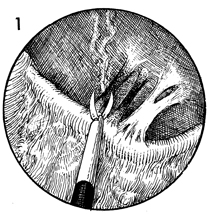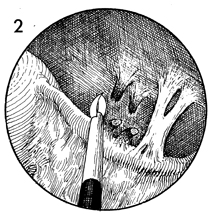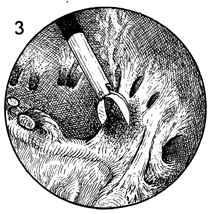|
||||||
Diagnostic
Uses Demonstration Laparoscopic
Resection Ovarian
Biopsy Electrocoagulation
of Lysis
or Adhesions Control
of Hemorrhage Sterilization
by Silastic
Band Sterilization Hulka
Clip Sterilization Sterilization
by the Sterilization
by the Sterilization
by the Sterilization - Ucheda Technique Tuboplasty
- |
Lysis of Adhesions via Laparoscopy The laparoscope can be used in the lysis of intraperitoneal adhesions.
The technique consists of electrofulgurating the adhesion and cutting
the adhesion with scissors in the area electrocoagulated. The purpose of the operation is to lyse intraperitoneal adhesions, utilizing the advantages of the laparoscopic technique. Physiologic Changes. The Fallopian tubes, colon, and intestine are freed and are thus able to resume their physiologic functions without entrapment. Points of Caution. Precise surgical judgment is needed to lyse the adhesions via the laparoscopic technique without producing injury to the organ adjacent to the adhesion. Certain kinds of adhesions are more amenable to laparoscopic lysis than others. In general, "violin-string," thin, filmy adhesions are best suited for this technique, while thick, dense adhesions that can contain a portion of a viscus should not be treated by this method. Technique
|
|||||
Copyright - all rights reserved / Clifford R. Wheeless,
Jr., M.D. and Marcella L. Roenneburg, M.D.
All contents of this web site are copywrite protected.



